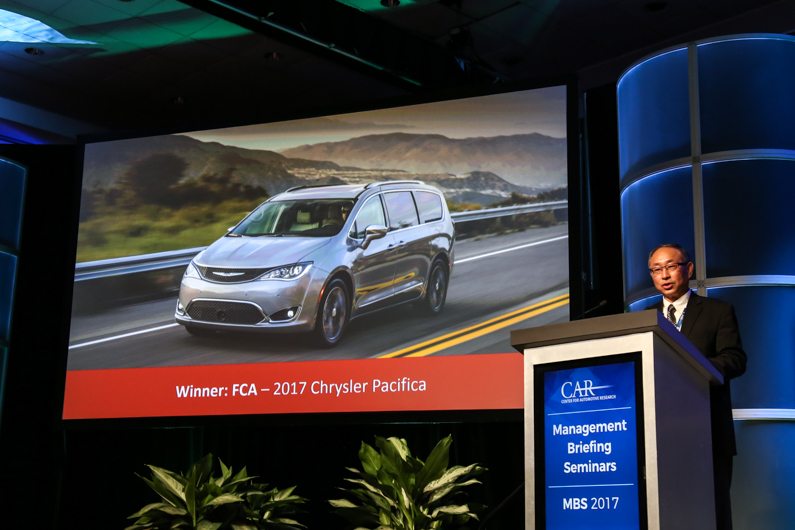
Software company Altair and the US-based Center for Automotive Research (CAR) have announced the winners of the 5th annual Altair Enlighten Award, which promotes innovation in automotive lightweighting. The winner of the Full Vehicle category was the 2017 Chrysler Pacifica, which is 249 pounds (113 kilograms) lighter than its predecessor, while Toyota’s carbon fiber closure panels for the 2017 Prius Prime and Lexus LC500, and Faurecia’s Adaptive Valve for exhaust systems employed on the 2017 Chevrolet Silverado won for the module category. ‘For the 5th year, our expanding field of global entries demonstrates an incredibly impressive range of innovations helping to meet the worldwide weight reduction challenges of modern automotive manufacturing,’ said judging chair Dr Jay Baron, president and CEO of CAR, and director of CAR’s Coalition for Automotive Lightweighting Materials. ‘[All] our 2017 finalists are contributing to reductions in weight, fuel consumption, and CO2 emissions.’
Toyota’s winning entry featured the side and luggage doors of the 2017 Lexus LC and the liftgate of the 2017 Toyota Prius Prime which feature carbon fiber reinforced plastic (CFRP) inner panels, combined with aluminum, glass-fiber reinforced plastic (GFRP) and polypropylene outers for components that are 47% lighter than conventional metal structures. ‘Toyota is excited to offer closure systems that are optimized to the unique mission of each vehicle,’ said JP Flaharty, executive program manager at Toyota Motor North America R&D. ‘With CFRP applied to the Prius Prime liftgate and the Lexus LC side and luggage doors, our customers can recognize the light touch and high tech appearance of these sophisticated, lightweight door systems.’
This story is reprinted from material from Altair, with editorial changes made by Materials Today. The views expressed in this article do not necessarily represent those of Elsevier.



